Picturing the Americas International Symposium

About
In conjunction with the special exhibition Picturing the Americas: Landscape Painting from Tierra del Fuego to the Arctic, Crystal Bridges Museum of American Art is hosting an International Symposium November 13 and 14, 2015, featuring scholars from both North and South America. Panel discussions will focus on topics central to the themes of the exhibition, including “Land, Icon, and Nation,” “Art and Exploration,” and “Modernity in the Landscape.”
This public symposium presents an opportunity for scholars, educators, students, and the public to come together for an international exchange of views on a range of subjects connected to and inspired by landscape painting from Canada to Peru. The symposium will address a broader consideration of landscape painting in the Americas.
The Symposium and the travel stipends are supported by a grant from the Terra Foundation for American Art.
Schedule
11/13/15
4:30 to 9 pm Two busses shuttling from Simmons Suites and 21c Hotel to Museum to Simmons Suites and 21c Hotel
7 to 8 pm Opening Lecture » Ivo Mesquita: Picturing the Americas Today
Ivo Mesquita, originator of the idea behind Picturing the Americas, will present this Opening Lecture for the exhibition and share his view of Latin America’s presence in the current art world. Mesquita’s idea took root in the late 1980s, when he spent time in Winnipeg, Manitoba and first saw the paintings of the Group of Seven, striking wonder in the connections across the hemisphere. In conjunction with the exhibition’s opening and the public symposium, Mesquita will focus on Latin American artists and the story of imagining this groundbreaking exhibition. Kick off the symposium’s international exchange of views and ideas with this reflective lecture.
11/14/15
8:30 to 10 am Two busses shuttling from Simmons Suites and 21c Hotel to Museum
9 to 10 am Registration
10 to 10:15 am Welcome
10:15 to 10:45 am Curators’ Overview:
Peter John Brownlee, Curator, Terra Foundation for American Art, Chicago; Valéria Piccoli, Chief Curator, Pinacoteca do Estado de São Paulo, Brazil; Georgiana Uhlyarik, Associate Curator of Canadian Art, Art Gallery of Ontario, Toronto
The co-curators of the Picturing the Americas exhibition will provide an overview of key themes of the exhibition and prompt discussion topics to frame the day’s proceedings.
10:45 am to 12:30 pm Panel Discussion: Land, Icon, Nation
Landscape paintings make visible our identities as nations through the depiction of unique topographical features, such as views of the Valley of Mexico or Yosemite Valley, for example. There are multiple perspectives and voices in the Americas. How do Native peoples conceptualize and visualize land, icon, and nation? How might the vision look similar or different across the Americas?
Moderator: Peter John Brownlee
Panelists:
Ruth Phillips, Canada Research Chair in Modern Culture and Professor of Art History, Carleton University, Ottawa: North American Peoples and Ideas of Land, Icon, Nation
Alberto Nulman Magidin, PhD candidate, Instituto de Investigaciones Estéticas at Universidad Nacional Autónoma de Mexico: !Basta de tierra amarilla y de tepozanes! (Enough of yellow earth and butterfly bushes!) Depicting the Valley of Mexico in the nineteenth century
Edward J. Sullivan, Helen Gould Sheppard Professor of the History of Art, Institute of Fine Arts, New York University: The Caribbean in the Nineteenth Century: Landscape of Desire
12:30 to 2:00 pm Lunch
2:00 to 3:15 pm Panel Discussion: Art & Exploration
Scientific inquiry and a desire to depict grand, awe-inspiring views of America’s remotest regions led artists to join expeditions of discovery. How did the interests of science and art intersect in the landscape?
Moderator: Valéria Piccoli
Panelists:
Pablo Diener, Associate Professor, History Department at Universidade Federal do Matto Grosso: European Artist Travelers in South America
Jennifer Raab, Assistant Professor, History of Art, Yale University: Frederic Church in the Americas
3:15 to 3:30 pm Break
3:30 to 4:45 pm Panel Discussion: Modernity & Landscape
The singular and visionary paintings of Lawren Harris, Georgia O’Keeffe, and Tarsila do Amaral invoke a powerful sense of individual belonging inspired by the spirit of the land. How did these artists personalize a sense of place? How did modern landscapes inspire a renewed and distinct sense of nationhood?
Moderator: Georgiana Uhlyarik
Panelists:
Sara Angel, Founding Director, Art Canada Institute, and PhD candidate, University of Toronto: Mother Earth and the Spirit of Eternity: Lawren Harris, Georgia O’Keeffe, Rockwell Kent, and the North American Landscape in Ecstasy
Regina Teixeira de Barros, Curator at Pinacoteca do Estado de São Paulo: “Tarsila and Modern Landscape in Brazil”
5:00 to 6:00 pm Cocktails at Walker Landing
Complimentary Champagne and Cash Bar
5:30 to 7 pm Two busses shuttling from Museum to Simmons Suites and 21c Hotel
Speakers
Sara Angel | Art Canada Institute & University of Toronto
Sara Angel is the founder and Executive Director of the Art Canada Institute/Institut de l’art du Canada, a research organization based at the University of Toronto dedicated to the education and promotion of Canadian art history. She holds a Trudeau Doctoral Scholarship, the most prestigious award of its kind in Canada, given for innovative ideas that will help solve issues of critical importance to Canadians. A leading visual arts journalist and a recognized authority on visual culture, Angel has been a guest lecturer at Harvard University, the University of Toronto, Ryerson University, the Royal Ontario Museum, the Art Gallery of Ontario, and the National Gallery of Canada. Her academic writing has appeared in the Journal for Canadian Art History, Leonardo: The Journal of the International Society for the Arts, Sciences and Technology, and Regarding the Popular: High and Low Culture in the Avant-Garde and Modernism (Walter de Gruyter Gmbh & co. KG).
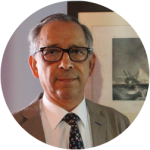 Pablo Diener | Universidade Federal do Matto Grosso, Brazil
Pablo Diener | Universidade Federal do Matto Grosso, Brazil
Pablo Diener received his PhD in Art History from the University of Zurich and is currently a professor in the History Department at the Universidade Federal de Mato Grosso, in Brazil. His main research interest is eighteenth- and nineteenth-century artistic and scientific expeditions to the Americas. He is the author of a catalogue on the work of Johann Moritz Rugendas and has written several monographic studies about Alexander von Humboldt. He has published about the legacies of C.F.Ph. von Martius, Alexandre Rodrigues Ferreira, and G.H. von Langsdorff in Brazil, and of Jean-Frédéric Waldeck, the Baron de Courcy, and Carl Nebel in Mexico, and organized exhibitions on these subjects in Mexico, Brazil, Chile, Spain, and Germany. His recent publications include Un Brasil para Martius (Rio de Janeiro, 2012), Rugendas e o Brasil (Rio de Janeiro, 2012), and Os Bastidores da Expedição Langsdorff (Cuiabá, 2014), which were coauthored with Maria de Fátima Costa.
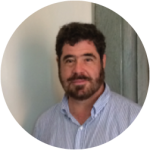 Alberto Nulman Magidin | Universidad Nacional Autonoma de Mexico
Alberto Nulman Magidin | Universidad Nacional Autonoma de Mexico
Alberto Nulman Magidin is a Mexican art historian and filmmaker. His research interests are centered on the relationship between art and science, the theories and practices of landscape between the seventeenth and twentieth centuries, and nineteenth-century Mexican painting.
He has focused his work as a filmmaker on directing and screenwriting documentaries and television series, and has designed audiovisual and multimedia content for museums and exhibitions. He has participated in over twenty museum projects in Mexico and Central America, and has directed several television series and a dozen of documentaries on art history, science, cultural history, and social and environmental issues, that have been exhibited worldwide. Currently, he is a professor of Art History at his alma mater, the National Autonomous University of Mexico, serves on the board of the Spanish Association of Scientific Film and Image (ASECIC), and is a member of the Mexican National System of Art Creators (SNCA).
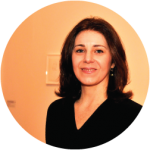 Valéria Piccoli | Chief Curator, Pinacoteca do Estado de São Paulo, Brazil
Valéria Piccoli | Chief Curator, Pinacoteca do Estado de São Paulo, Brazil
Valéria Piccoli holds a degree in Architecture and a PhD in Brazilian Art History from the University of São Paulo. Piccoli was a curatorial assistant at the XXIV Bienal de São Paulo and worked as Assistant Curator at the private collection of Fundação Estudar. Since 2007, Piccoli has been part of the curatorial team at the Pinacoteca do Estado de São Paulo and she has curated many exhibitions focused on the museum’s collection. Piccoli was the coordinator of the new installation of Pinacoteca’s collection, Arte no Brasil: uma história na Pinacoteca de São Paulo (Art in Brazil: a story at the Pinacoteca de São Paulo, 2011). She has been Chief Curator at Pinacoteca since 2012 and has collaborated on international exhibition projects such as Terra Brasilis, part of the Europalia Brésil show held in Brussels in 2011.
 Jennifer Raab | Yale University, USA
Jennifer Raab | Yale University, USA
Jennifer Raab is Assistant Professor in the Department of the History of Art at Yale University where she teaches courses in American art and the history of photography. Her first book, Frederic Church: The Art and Science of Detail, will be published in Fall 2015. Recent publications have considered history painting and the aesthetics of mapping, the visual culture of the American Civil War, and Dan Flavin’s collection of nineteenth-century drawings. Her current project examines the photograph as relic. She was an Andrew W. Mellon Postdoctoral Fellow at the Institute of Fine Arts, New York University, and has also held fellowships at the John F. Kennedy-Institut für Nordamerikastudien, Freie Universität, Berlin; the Smithsonian American Art Museum, Dumbarton Oaks; and the Terra Foundation for American Art.
 Georgiana Uhlyarik | Associate Curator of Canadian Art, Art Gallery of Ontario, Toronto, Canada
Georgiana Uhlyarik | Associate Curator of Canadian Art, Art Gallery of Ontario, Toronto, Canada
Georgiana Uhlyarik is Associate Curator of Canadian Art at the Art Gallery of Ontario, Toronto. Her recent curatorial projects include Introducing Suzy Lake; The Passion of Kathleen Munn; Betty Goodwin: Work Notes; and Michael Snow: Objects of Vision. She is co-curator of the touring exhibition Picturing the Americas: Landscape Painting from Tierra del Fuego to the Arctic, and co-editor of the accompanying publication. Uhlyarik is the editor of Introducing Suzy Lake (Black Dog Publishing, 2014), author of Kathleen Munn: Life & Work (Art Canada Institute, 2014), contributor to Barbara Astman: I as Artifact (University of Western Ontario, 2014), among other publications. She received her MA in Art History at York University, Toronto, where she is now Adjunct faculty. Uhlyarik serves on the Board of Trustees of the Association of Art Museum Curators. Originally from Romania, she lives in Toronto with her twin sons.
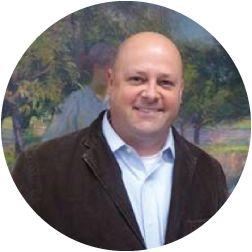 Peter John Brownlee | Curator, Terra Foundation for American Art, Chicago, USA
Peter John Brownlee | Curator, Terra Foundation for American Art, Chicago, USA
Peter John Brownlee is curator at the Terra Foundation for American Art in Chicago. He earned a PhD in American Studies at the George Washington University. His articles have appeared in American Art and the Journal of the Early Republic and he has contributed essays to numerous exhibition catalogues. He was organizing curator of Samuel F. B. Morse’s “Gallery of the Louvre” and the Art of Invention and editor of the exhibition’s multi-author catalogue. Brownlee was co-organizing curator of Home Front: Daily Life in the Civil War North, a collaboration with the Newberry Library. The exhibition’s catalogue was awarded a PROSE award by the Association of American Publishers.
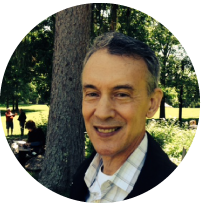 Edward J. Sullivan | Institute of Fine Arts, New York University
Edward J. Sullivan | Institute of Fine Arts, New York University
Edward J. Sullivan is the Helen Gould Sheppard Professor of the History of Art at the Institute of Fine Arts and the Department of Art History, New York University. He is the author of more than thirty books and exhibition catalogues concerning art from the colonial era to the present in the Spanish-, Portuguese- and French-speaking regions of the Americas.
His recent publications include ‘The Language of Objects in the Art of the Americas’ (Yale University Press, 2007) and ‘From San Juan to Paris and Back: Francisco Oller and Caribbean Art in the Era of Impressionism’ (Yale University Press, 2014 – whose publication was supported in part by a grant from the Terra Foundation). Sullivan is also the co-curator of the current exhibition “Impressionism and the Caribbean: Francisco Oller and his Transatlantic World” currently on view at the Blanton Museum, Austin. It will be seen as of October 2 at The Brooklyn Museum before its final venue, the Museo de Arte de Puerto Rico in San Juan (January, 2016).
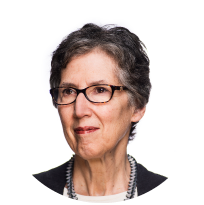 Ruth B. Phillips | Carleton University, Ottawa, Canada
Ruth B. Phillips | Carleton University, Ottawa, Canada
Ruth B. Phillips holds a Canada Research Chair and is Professor of Art History at Carleton University, Ottawa. Her research focuses on the indigenous arts of North America and critical museology. Her books include Museum Pieces: Toward the Indigenization of Canadian Museums (2011) and Trading Identities: The Souvenir in Native North American Art from the Northeast (1998). With co-author Janet Catherine Berlo she has recently published the expanded second edition of Native North American Art for Oxford University Press. Phillips has served as Director of the University of British Columbia Museum of Anthropology and President of CIHA, the International Committee on the History of Art. She is a fellow of the Royal Society of Canada.
 Regina Teixeira de Barros | Pinacoteca do Estado de Sao Paulo, Brazil
Regina Teixeira de Barros | Pinacoteca do Estado de Sao Paulo, Brazil
Regina Teixeira de Barros is a Senior Curator at Pinacoteca do Estado de São Paulo, where she has been working since 2003. Among the exhibitions she curated are Tarsila viajante [Travelling Tarsila], Willys de Castro, Art in Brazil: a Story of Modernism at the Pinacoteca de São Paulo (long-term exhibition), and Constructive Art at the Pinacoteca. She has contributed essays in a number of exhibition catalogues, and between 2006 and 2008 coordinated the research team and edition of the Catalog Raisonné Tarsila do Amaral. She is currently researching Pop Art in Brazil. De Barrow holds a master’s degree in Art History from the University of São Paulo and specializes in twentieth-century art, with a focus on Brazilian Modernism. She teaches courses on modern art and museum studies at Faculdade Santa Marcelina, in São Paulo, since 2002.
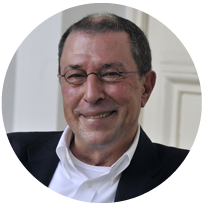 Ivo Mesquita | Pinacoteca do Estado de São Paulo, Brazil
Ivo Mesquita | Pinacoteca do Estado de São Paulo, Brazil
Ivo Mesquita has been the Artistic Director Pinacoteca do Estado de São Paulo since May 2012 and was chief curator at the same institution between 2006 and 2012. He was researcher and assistant curator at the São Paulo Biennial Foundation for eight years, co-curator of the 20th and 24th Bienal de São Paulo and chief curator of the 28th. He was visiting professor for eleven years at the Center for Curatorial Studies, Bard College, in New York, and Director of the Museum of Modern Art in 1999. As an independent curator, he has contributed to projects for various international institutions and was the curator of the Brazilian Pavilion at the 1999 and 2009 Venice biennales and one of the curators of the binational InSite’97 and 2000 projects, in Tijuana, Mexico.
Picturing the Americas Travel Stipends
The Terra Foundation for American Art has generously sponsored a limited number of travel stipends available to cover the cost of travel to and from Bentonville for this event.




